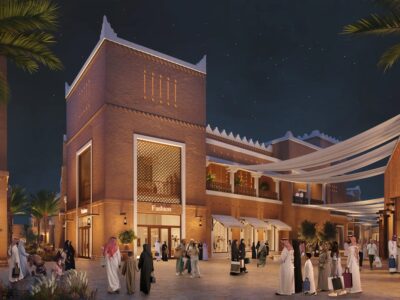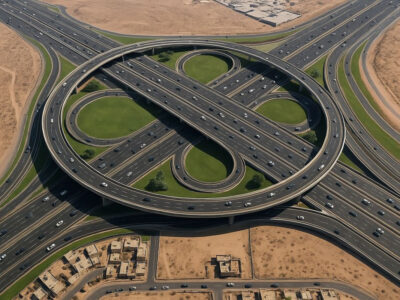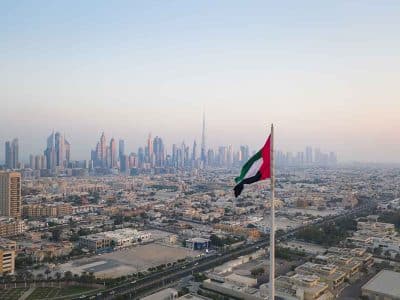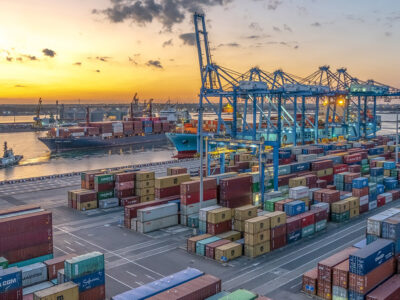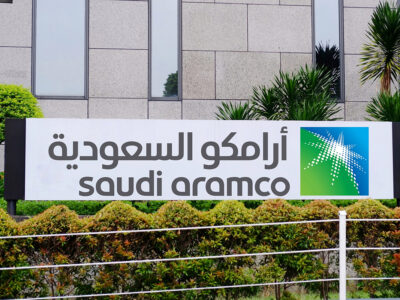Establishing a community on a well-engineered spit of land in the Gulf is one thing; transporting the populace and countless visitors from one end to the other is another matter entirely. But developer Nakheel has seemingly solved this particular brain-teaser with the construction of the Middle East’s first and only monorail on the Palm Jumeirah.
Costing US $381 million (AED1.4 billion), the system – which is fully automatic – is due to open in December 2008 and will carry up to 6,000 people per hour when running at full capacity. Four stations – Gateway Towers, Trump Tower, Retail Plaza (formerly Trump Plaza) and Atlantis – plus one depot and one operations control centre have been planned for the route.
Marubeni is the general contractor, with Hitachi as vehicle and systems contractor, and a joint venture between Obayashi and Oriental is responsible for all civil and building works.
Pioneering new transport techniques within the region may add gloss to an already high-profile project, but it also means that no previous examples exist to provide a template. This leads to the question: what is the best method of construction? Mitsukazu Nakata, project director, engineering, Nakheel, explains that Japanese standards based on the Japanese Ministry of Transportation Railway standard in monorail design – known as AA Standard – were implemented for the project. Yet, in some areas, it needed to be adjusted due to a combination of climatic differences and the demands of the Roads and Transport Authority (RTA).
“Dubai has different climatic conditions, so the air conditioning capacity, for example, has to be increased to match the local climate. Plus, fire resistance for flooring is 15 minutes in Japan but on the Dubai Metro it is 30 minutes. It costs money but it is good,” says Nakata.
The lack of existing regulations also meant that further consultation with the RTA was required to establish a valid set of safety codes. Lloyds Register, which is responsible for risk analysis on the Dubai Metro, and Locke Carey, which is working on the fire safety analysis for the project, were brought in to ascertain the various issues. The report submitted was then reviewed by consultants Mott MacDonald and Systra. In all, this process took a year to complete.
In September this year, work will begin to connect the Palm Jumeirah monorail system with the Dubai Metro. The idea is to ensure complete connectivity so that tourists can leave Dubai Airport on the metro and continue through to the Palm, where they change over to the monorail system and move onwards to their hotel.
Like Singapore, the RTA aspires to a one-card system that will operate on all forms of transport across the city. And while Nakata would not be drawn on who is going to secure the extension contract, he hinted that it would be one of the existing contractors who could secure the $190 million deal. This would extend the monorail by another 2km. “Our target is to be connected to Dubai Metro by September 2009,” he says.
But why is the Palm employing a system that is so much more costly than a conventional rail network? According to Nakata it is quite simple – it offers one feature that makes it invaluable in such a development. “The monorail runs with rubber tyres so there is no noise. The Palm has luxury residences and to have a normal steel-wheeled rail system would be too noisy,” he says. But there are still parameters that the system must adhere to – within 10m of any residential dwelling, noise must be no higher than 65db.
Nakata adds that unlike in Japan, where there is a beam joint with each pier span, the beams on the Palm monorail extends the length of five piers, which at 29m per pier, is one piece extending to 145m. This has the advantage of reduced shock and vibration, leading to quieter running. Each 80-tonne piece is cast in the Jebel Ali precast yard, before being brought on site at night.
Rewriting codes aside, Nakata also has to contend with numerous other projects underway within the confined vicinity of the trunk, which requires close coordination. “The problem is that with road construction, monorail construction and other building works going on at the same time, coordination is especially difficult.”
This was compounded by the demands placed by Nakheel on the route of the system. “Basically, Nakheel wanted the monorail running through the centre of the Palm, but with several projects coming up like the Trump Tower and Taisei’s undersea tunnel, design and concept coordination had to mix, and it was not easy.” Typically tight deadlines were imposed on the project, adds Tanaka, whose team has 33 months to design and build the system, which he acknowledges is quite tight – the system has to be operational by the time the Atlantis development is finished.
The monorail is currently 80% complete – at present, piers are being constructed in the water at the north end of the Palm between the trunk and the crescent, on its way to the fourth and final station – Atlantis. The pilings for this section will be 1.8m, with each pile taking three days to build. Each pier on the trunk has pilings of between 20 and 25m and the average height of each is 10m, with the highest point of the system reaching 24m. The loads for each pier have been tested to 200 tonnes. Before design started, soil tests were carried out, then the piling foundation, pier and beams were designed in accordance with British Standards. Once piling had been completed, load tests were conducted to ensure they passed. Each pile is between 1.2 and 1.5m in diameter.
Piling for the Gateway Tower complex was also completed last week. At 270m long and 80m wide, the complex will cover an area of 500,000m2 complete with one residential and two office towers. It will also feature one of the two substations powering the monorail on the ground floor.
When the track is completed, a six-month testing period involving computer analysis will commence. Nakheel signed a technical agreement last December, which will see the Osaka monorail team provide technical advice and training for staff, and during this testing period, a number of staff will be sent to Osaka to be trained, taking advantage of the close relationship between the two governments (Dubai and Osaka are twinned).
With the first trains expected to be delivered in February or March next year, there is an undeniable sense that the much-vaunted vision of Dubai is slowly coming to fruition. And there is no denying that come December 2008, those landing at Dubai Airport to step onto the metro followed by the monorail will form a much better first impression than those stuck in a traffic jam on Garhoud Bridge.
